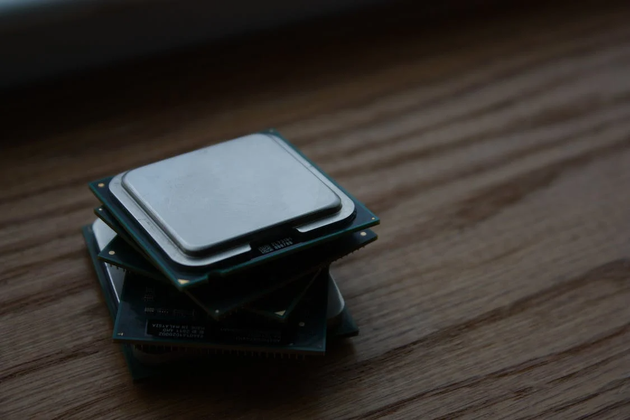your current location is:Home > TechnologyHomeTechnology
Intel's net profit fell 85% in the third quarter, and it will cut costs by $10 billion in the next three years
Weak personal computer and server chip sales weighed on performance, and Intel's performance is under pressure, and measures such as layoffs will be taken to cut costs. After the U.S. stock market closed on October 27, Intel announced its financial results for the third quarter of fiscal 2022. According to the report, Intel’s third-quarter revenue was $15.338 billion, down 20% from $19.192 billion in the same period last year; net profit was $1.019 billion, down 85% from $6.823 billion in the same period last year.
Intel CEO Pat Gelsinger said on an earnings call that he expects economic uncertainty to continue into 2023, and plans to cut $3 billion in 2023, and Intel will cut as much as 100 percent by 2025. billion dollar cost. Kissinger said the moves will affect headcount.
Among major divisions, Intel's Client Computing Group, which sells personal computer (PC) chips, posted a 17 percent year-over-year decline in revenue to $8.12 billion, reflecting lower PC demand. Intel said PC demand was weak in the third quarter, mainly due to weak consumer and education markets, while PC makers were still reducing inventories. Market research firm Gartner previously reported that global PC shipments fell by 19.5% year-on-year in the third quarter, the largest drop in more than 20 years. The computer maker shipped 68 million PCs in the most recent quarter, down from 84.5 million a year earlier. Another data provider, IDC, said worldwide PC shipments fell 15% in the third quarter to a total of 74.3 million units, but shipments remained above pre-pandemic levels.
The data center and AI division (Datacenter & AI, DCAI) revenue decreased by 27% year-on-year to US$4.21 billion, with almost no profit. This division mainly sells server chips and programmable chips (FPGA), etc., showing that data center users are slack in purchasing. Kissinger said the segment's profitability was impacted by lower revenue, higher start-up costs for advanced process nodes and higher costs of transitioning to 10-nanometer products due to weak demand from the Chinese market and some cloud customers.
Under the pressure of the two pillar businesses, the Network and Edge Group continued to grow, with revenue increasing by 14% year-on-year to US$2.27 billion. The accelerated computing system and graphics (AXG) business also increased by 8% year-on-year. Revenue was $185 million.

In recent years, Intel has vigorously increased capital expenditure and pushed the "IDM 2.0" strategy. Intel's efforts in wafer manufacturing, while competing for advanced processes, continue to throw out production expansion plans. The foundry (IFS) business it promotes has revenue of $171 million in the quarter, a year-on-year decrease of 2%, and an operating loss of 1.03%. US$44 million in operating profit for the same period in 2021. On the progress of this business, Intel's foundry business has expanded the scope of cooperation to 7 of the top 10 foundry customers, and has begun to test chips for 35 customers.
Intel's autonomous driving subsidiary, Mobileye, was officially listed on October 26. In the quarter, revenue increased by 38% year-on-year to $450 million; operating profit was $142 million, a year-on-year increase of 12%. Despite the listing of Mobileye, Intel will still have control of the company. When Mobileye announces plans to go public in late 2021, the market is rumored to be valued at at least $50 billion. Calculated at a target price of $20 per share, its $15.9 billion valuation is only slightly higher than Intel's 2017 acquisition price, shrinking by more than 60%, and Mobileye's current market value is $21.818 billion.
On the chip process node, Intel plans to continue to promote the process process update and complete the 5th generation process update within 4 years, that is, from this year to 2025, to get the 5th generation from Intel 7nm (Intel 7) to Intel 18A. Generation process. According to the financial report, Intel's 4-nanometer (Intel 4) process is expected to enter mass production in the fourth quarter of 2022. In addition, the advancement of Intel's 3-nanometer (Intel 3) and below two-generation processes is also in line with plan.
Intel forecast sales of $14 billion to $15 billion for the current quarter, below the $16.3 billion expected by Wall Street analysts. The company also slashed its full-year sales forecast, now expecting sales of as much as $64 billion, down from a forecast of $68 billion in July, and lowered its capital spending forecast for this year to $25 billion from $27 billion. Gross margins will narrow further to 47.5% than previously expected.
In addition to Intel, manufacturers including AMD and Nvidia have warned of a tightening of the PC market, a surge in inventory pressure, and sharply lowered financial forecasts. On October 7, AMD announced its preliminary third-quarter results that were far lower than previously announced financial forecasts. AMD expects third-quarter revenue to be about $5.6 billion, down about $1 billion from its previous revenue forecast. At the same time, AMD expects gross profit to decline in the third quarter, showing that non-GAAP gross margins are expected to be around 50%, compared with an earlier estimate of close to 54%.
related articles
Article Comments (0)
- This article has not received comments yet, hurry up and grab the first frame~













